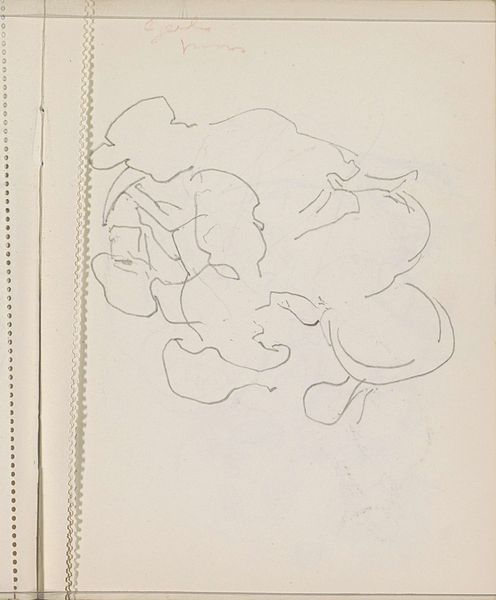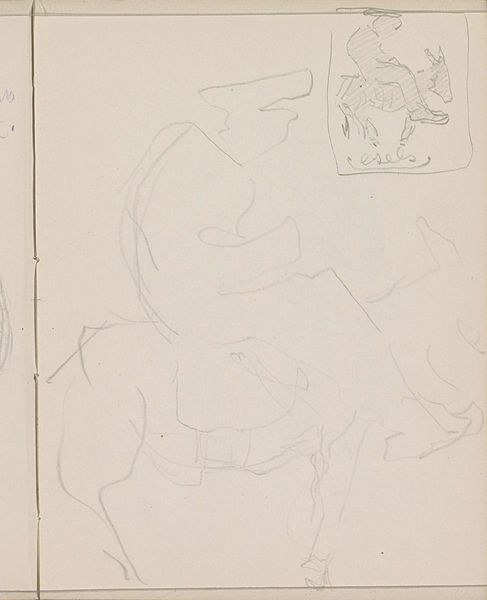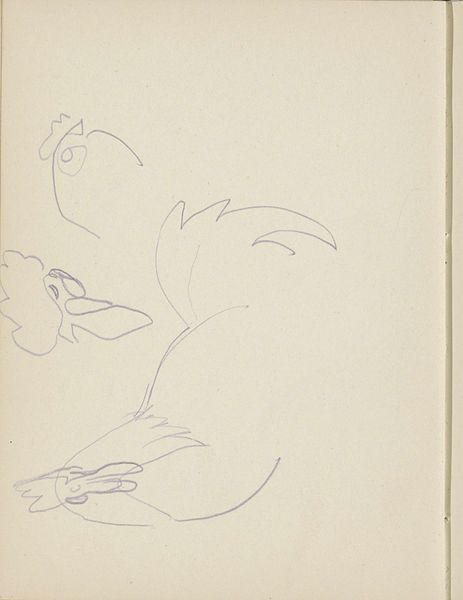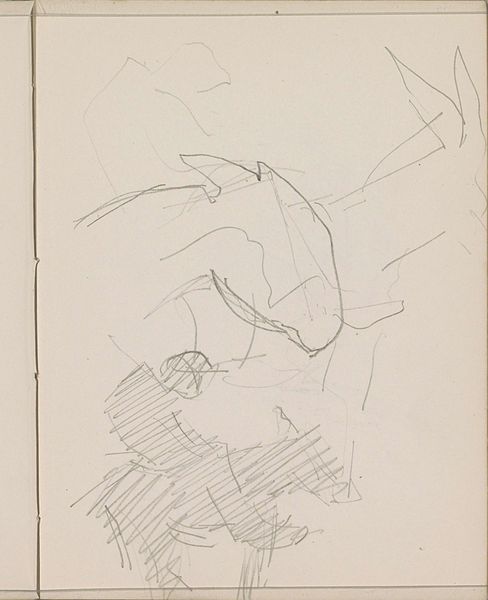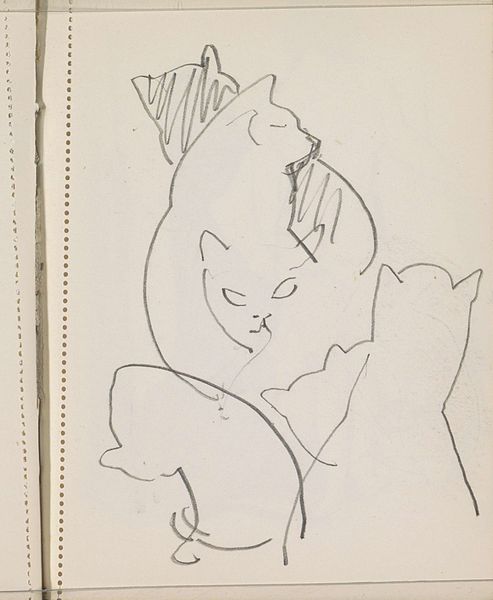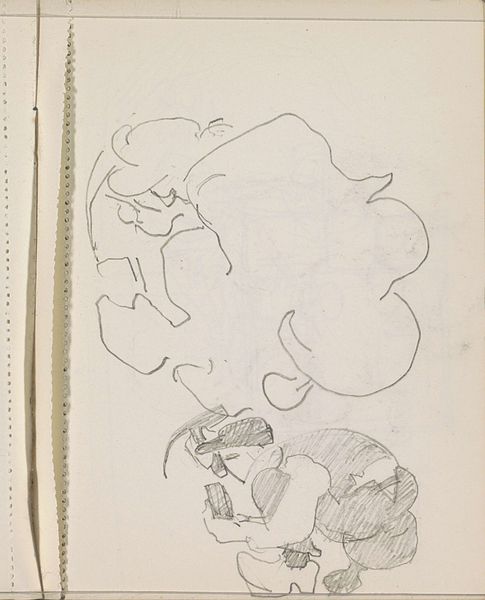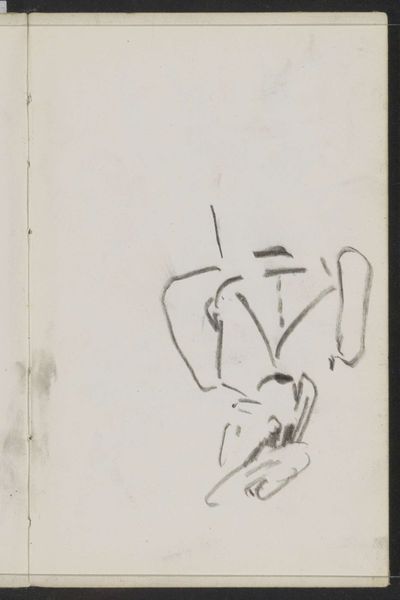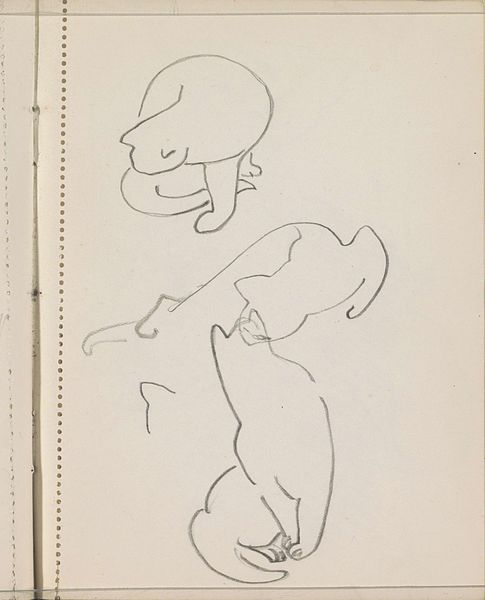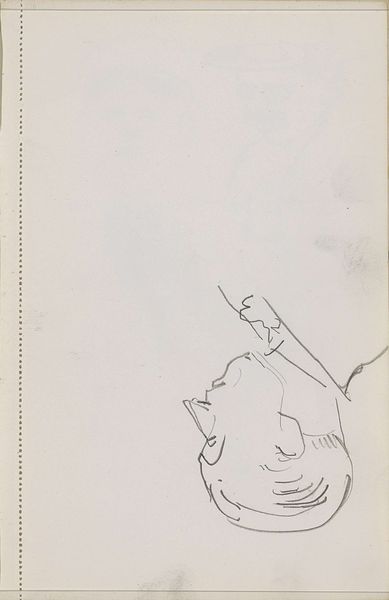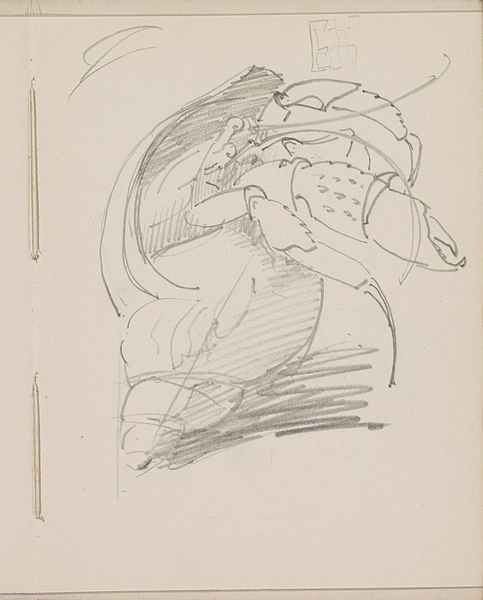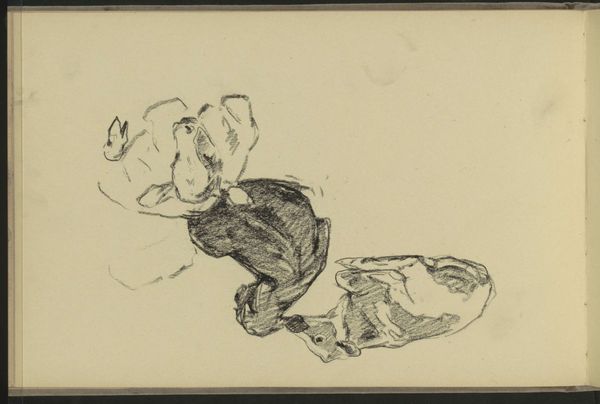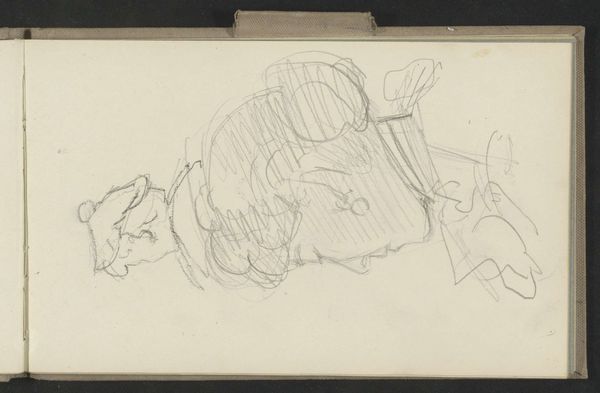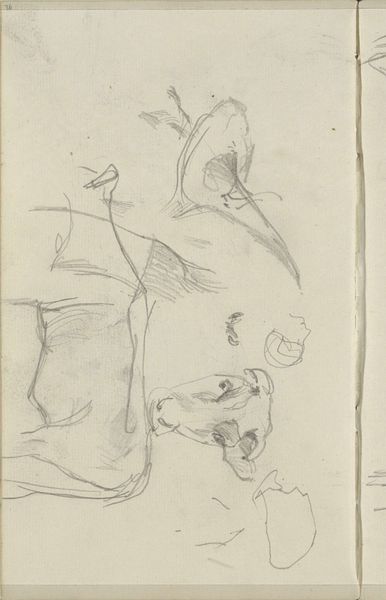
drawing, pencil
#
drawing
#
light pencil work
#
pen sketch
#
figuration
#
personal sketchbook
#
idea generation sketch
#
sketchwork
#
ink drawing experimentation
#
sketch
#
pen-ink sketch
#
pencil
#
sketchbook drawing
#
sketchbook art
#
initial sketch
Copyright: Rijks Museum: Open Domain
Curator: Welcome to the Rijksmuseum. Today, we’re looking at "Knielende man op klompen," a sketch by Reijer Stolk, dating from between 1906 and 1945. Editor: My first impression is one of vulnerability, or perhaps introspection. The simple lines, almost hesitant, really convey a sense of the figure’s weight and stillness. Curator: Exactly. It's interesting how a seemingly simple pencil sketch can carry so much weight, figuratively and literally. Considering Stolk's era, it might be reflective of broader societal concerns. It makes me wonder what social narratives the artist had in mind. Was he studying the working class or documenting the effects of early industrialization on Dutch laborers? Editor: Or is he simply contemplating a figure of rest? There’s an ambiguity here that feels compelling. It is important to discuss the socio-economic context of people wearing klompen, but what of the embodied politics and emotional implications for the artist? This sketch challenges us to rethink historical categories of analysis. What emotions are legible here? What politics of representation? Curator: True, these quick sketches provide access to an artist's raw process. I think the rough quality offers something really intimate. You get to see the artist grappling with form and posture in a very direct way. Editor: Absolutely. This rawness has implications for the interpretation. Does it become complicated that the position could communicate prayer as much as reflection? What intersectional perspective does this demand that the audience to take into consideration? The kneeling resonates profoundly given the various global and political struggles happening at that time. Curator: You are spot on. By capturing such fleeting moments and the simplicity and brevity, the sketch itself opens up an array of contexts, allowing our visitors to reflect upon society through artistic and historical perspectives. Editor: It reminds us that art isn’t made in a vacuum; it’s embedded within specific historical conditions but asks to see it through an empathic, feeling lens. Thanks for your insights. Curator: And thank you. It has been wonderful to consider a piece with such direct simplicity but loaded imagery from many perspectives.
Comments
No comments
Be the first to comment and join the conversation on the ultimate creative platform.
